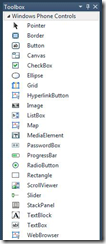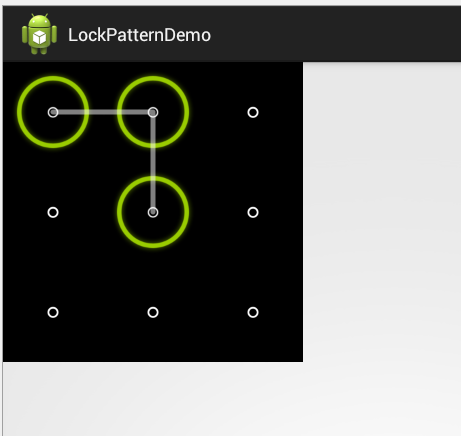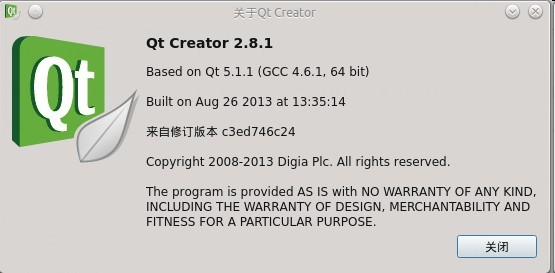ios播放PCM数据
[cpp]
//
// MainViewController.h
// RawAudioDataPlayer
//
// Created by SamYou on 12-8-18.
// Copyright (c) 2012年 SamYou. All rights reserved.
//
#import <UIKit/UIKit.h>
#import <AudioToolbox/AudioToolbox.h>
#define QUEUE_BUFFER_SIZE 4 //队列缓冲个数
#define EVERY_READ_LENGTH 1000 //每次从文件读取的长度
#define MIN_SIZE_PER_FRAME 2000 //每侦最小数据长度
@inte易做图ce MainViewController : UIViewController
{
AudioStreamBasicDescription audioDescription;///音频参数
AudioQueueRef audioQueue;//音频播放队列
AudioQueueBufferRef audioQueueBuffers[QUEUE_BUFFER_SIZE];//音频缓存
NSLock *synlock ;///同步控制
Byte *pcmDataBuffer;//pcm的读文件数据区
FILE *file;//pcm源文件
}
static void AudioPlayerAQInputCallback(void *input, AudioQueueRef inQ, AudioQueueBufferRef outQB);
-(void)onbutton1clicked;
-(void)onbutton2clicked;
-(void)initAudio;
-(void)readPCMAndPlay:(AudioQueueRef)outQ buffer:(AudioQueueBufferRef)outQB;
-(void)checkUsedQueueBuffer:(AudioQueueBufferRef) qbuf;
@end
[cpp]
//
// MainViewController.m
// RawAudioDataPlayer
//
// Created by SamYou on 12-8-18.
// Copyright (c) 2012年 SamYou. All rights reserved.
//
#import "MainViewController.h"
@inte易做图ce MainViewController ()
@end
@implementation MainViewController
#pragma mark -
#pragma mark life cycle
- (id)init
{
self = [super init];
if (self) {
NSString *filepath = [[[NSBundle mainBundle] bundlePath] stringByAppendingPathComponent:@"audio.raw"];
NSLog(@"filepath = %@",filepath);
NSFileManager *manager = [NSFileManager defaultManager];
NSLog(@"file exist = %d",[manager fileExistsAtPath:filepath]);
NSLog(@"file size = %lld",[[manager attributesOfItemAtPath:filepath error:nil] fileSize]) ;
file = fopen([filepath UTF8String], "r");
if(file)
{
fseek(file, 0, SEEK_SET);
pcmDataBuffer = malloc(EVERY_READ_LENGTH);
}
else{
NSLog(@"!!!!!!!!!!!!!!!!");
}
synlock = [[NSLock alloc] init];
}
return self;
}
-(void)loadView
{
[super loadView];
self.view.backgroundColor = [UIColor grayColor];
UIButton *button1 = [UIButton buttonWithType:UIButtonTypeRoundedRect];
button1.frame = CGRectMake(10, 10, 300, 50);
[button1 setTitle:@"button1" forState:UIControlStateNormal];
[button1 setTitle:@"button1" forState:UIControlStateHighlighted];
[button1 addTarget:self action:@selector(onbutton1clicked) forControlEvents:UIControlEventTouchUpInside];
[self.view addSubview:button1];
UIButton *button2 = [UIButton buttonWithType:UIButtonTypeRoundedRect];
button2.frame = CGRectMake(10, 70, 300, 50);
[button2 setTitle:@"button2" forState:UIControlStateNormal];
[button2 setTitle:@"button2" forState:UIControlStateHighlighted];
[button2 addTarget:self action:@selector(onbutton2clicked) forControlEvents:UIControlEventTouchUpInside];
[self.view addSubview:button2];
}
- (BOOL)shouldAutorotateToInte易做图ceOrientation:(UIInte易做图ceOrientation)inte易做图ceOrientation
{
return (inte易做图ceOrientation == UIInte易做图ceOrientationPortrait);
}
-(void)onbutton1clicked
{
[self initAudio];
NSLog(@"onbutton1clicked");
AudioQueueStart(audioQueue, NULL);
for(int i=0;i<QUEUE_BUFFER_SIZE;i++)
{
[self readPCMAndPlay:audioQueue buffer:audioQueueBuffers[i]];
}
/*
audioQueue使用的是驱动回调方式,即通过AudioQueueEnqueueBuffer(outQ, outQB, 0, NULL);传入一个buff去播放,播放完buffer区后通过回调通知用户,
用户得到通知后再重新初始化buff去播放,周而复始,当然,可以使用多个buff提高效率(测试发现使用单个buff会小卡)
*/
}
-(void)onbutton2clicked
{
NSLog(@"onbutton2clicked");
}
#pragma mark -
#pragma mark player call back
/*
试了下其实可以不用静态函数,但是c写法的函数内是无法调用[self ***]这种格式的写法,所以还是用静态函数通过void *input来获取原类指针
这个回调存在的意义是为了重用缓冲buffer区,当通过AudioQueueEnqueueBuffer(outQ, outQB, 0, NULL);函数放入queue里面的音频文件播放完以后,通过这个函数通知
调用者,这样可以重新再使用回调传回的AudioQueueBufferRef
*/
static void AudioPlayerAQInputCallback(void *input, AudioQueueRef outQ, AudioQueueBufferRef outQB)
{
NSLog(@"AudioPlayerAQInputCallback");
MainViewController *mainviewcontroller = (MainViewController *)input;
[mainviewcontroller checkUsedQueueBuffer:outQB];
[mainviewcontroller readPCMAndPlay:outQ buffer:outQB];
}
-(void)initAudio
{
///设置音频参数
audioDescription.mSampleRate = 8000;//采样率
audioDescription.mFormatID = kAudioFormatLinearPCM;
audioDescription.mFormatFlags = kLinearPCMFormatFlagIsSignedInteger | kAudioFormatFlagIsPacked;
补充:移动开发 , IOS ,




